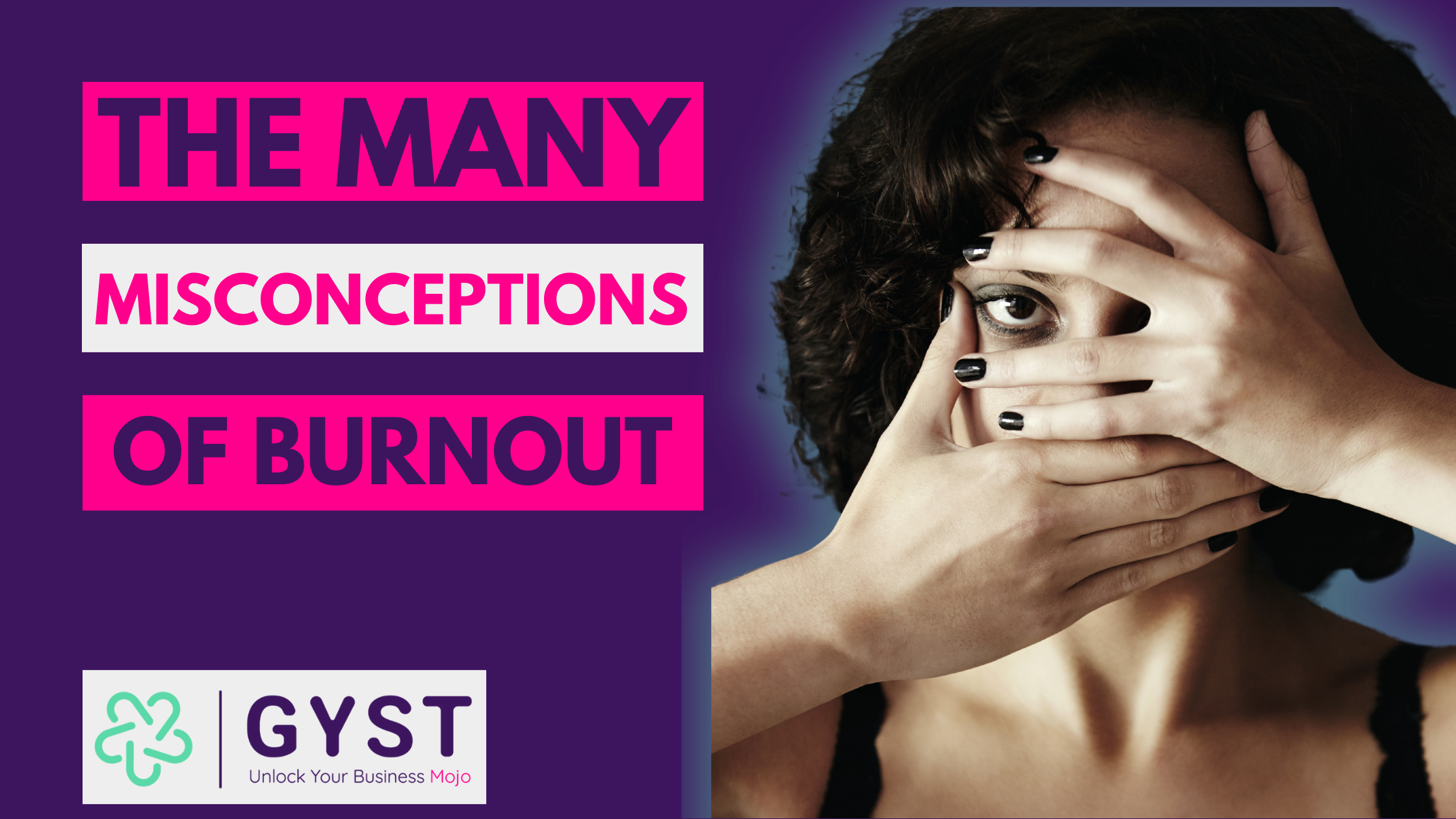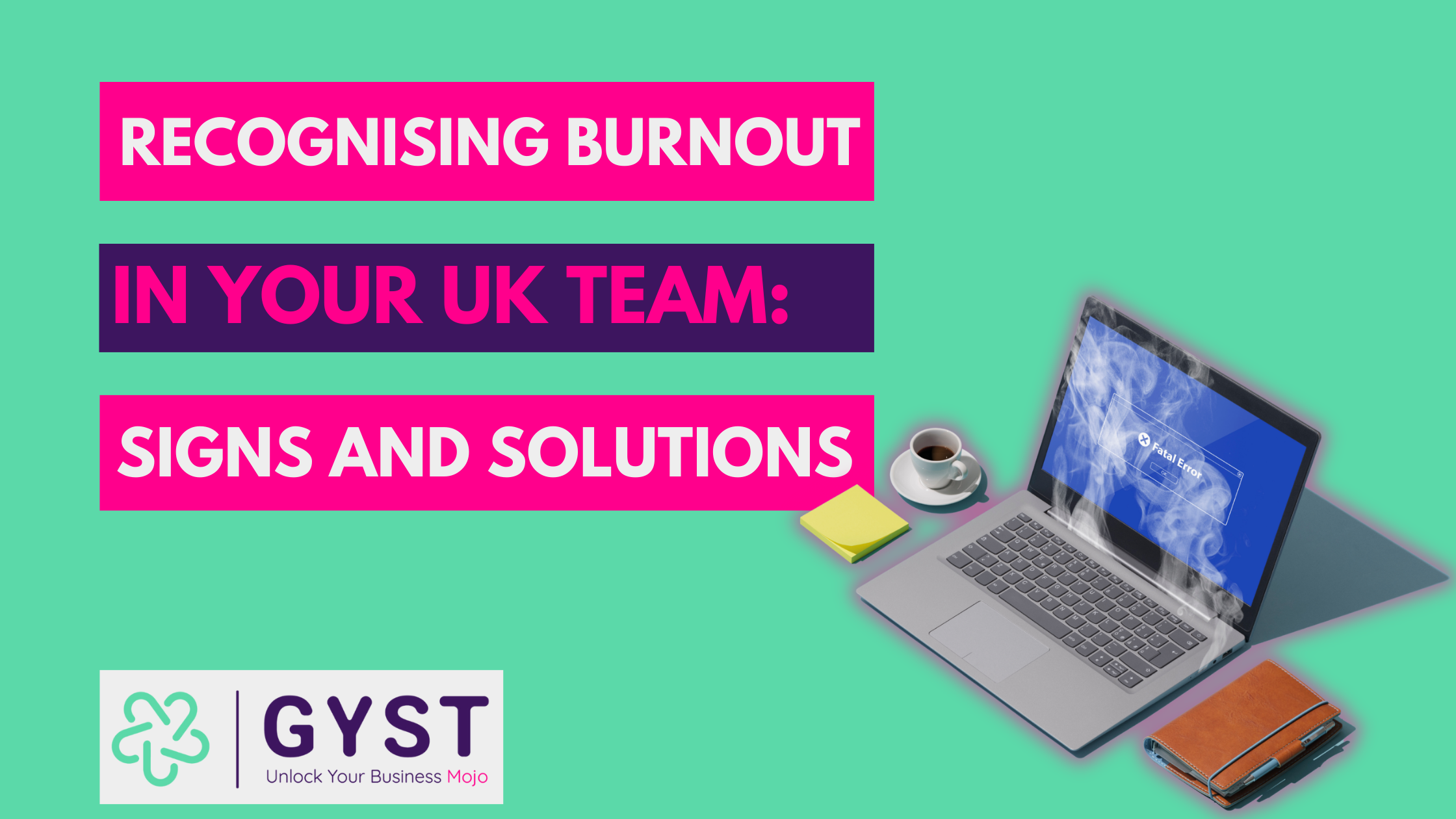Burnout has become a significant topic of discussion ever since the World Health Organization (WHO) recognised it as an official syndrome, progressing from exhaustion. This shift underscores the importance of addressing workplace wellbeing and occupational health to prevent employee burnout.
As awareness grows and is discussed on social media platforms, mainstream media outlets, and of course, recognised on companies websites, it has generated a lot of negative content and misconceptions surrounding burnout. The growing awareness around burnout is crucial, but it has also led to a proliferation of misinformation and misguided advice. I’ve seen dangerous posts, with people posting about how they combatted burnout by going for a run so they could work throughout the night.

I get it. I remember the days that I would trick myself into feeling good by waking up at 4 am, smashing my side hustle, a gym workout before I went to my 9–5. However, this is not a viable method on how to overcome burnout.
I’m trying to figure out if burnout is going to be the next badge of honour. Or more concerning, is it going to be the next fad?
Here’s the thing, people do burn out. It’s a horrible experience.
So how can we overcome and combat burnout? To begin, companies and management leaders need to look at their infrastructure to ensure they’re doing everything in their power to prevent it. However, we need to make sure we are getting the facts straight about burnout and employee wellbeing in the first place.
Let’s clear up some common misconceptions about burnout.

Understanding Burnout: A Serious Syndrome
Burnout is not merely a state of feeling tired or exhausted for a day. It is a chronic condition resulting from prolonged stress that affects one’s mental, emotional, and physical health. Addressing burnout requires more than just a temporary fix; it demands a comprehensive approach to wellbeing and occupational health.
Common Misconceptions About Burnout
- “Felt burnt out today, so I took the day off and now I feel great!”

This statement reflects a common misunderstanding. Burnout is not something that can be resolved with a single day of rest. It is a chronic condition that develops over time and requires a systematic approach to recovery. While taking a day off might provide temporary relief, it does not address the underlying issues that lead to burnout.
Fatigue and exhaustion are symptoms of burnout. If you frequently wake up feeling tired, it might be a warning sign that you are on the path to burnout, even if you haven’t reached the breaking point yet.
- Burnout is from hating your job

While job dissatisfaction can contribute to burnout, it is not the sole cause. Many individuals experience burnout despite loving their jobs. This often happens when they consistently push themselves beyond their limits, driven by a passion for their work and the pressures they place on themselves.
For some people, they love what they do. They’re in a situation where they love their work, the pressure and essentially the stress. They trick themselves into thinking they thrive in those situations. And here’s the crazy thing, they usually do. However, at what cost? There is only a certain amount of time you can live in those moments. It’s as if their bodies give up before their minds.
For these individuals, recognising personal limits and understanding the signs of burnout are critical. It’s essential to balance enthusiasm for work with sustainable practices to maintain long-term occupational health.
- When you burnout, it’s a sign you need to rest

Rest is indeed vital when dealing with burnout, but it is only part of the solution.
Burnout is exhaustion from prolonged stress that impacts your mind, emotions, and physical health. Resting becomes your only option. However, that’s not the only thing you need.
You also need to take time to consider how you got in that place in the first time.
- What led you to burnout?
- What do you need to do differently in the first place?
- What were the warning signs?
To effectively address burnout, individuals need to reflect on the factors that led to their condition. Identifying the sources of stress, recognising early warning signs, and implementing changes to prevent future burnout are crucial steps in the recovery process.
Changing your behaviours is also essential to overcoming and preventing burnout in the future.
- Burnout is from overworking

That’s a simplified view of it.
Overworking is a significant factor in burnout, but it is not the only one. Burnout can affect people from all walks of life, including university students, parents, carers, and athletes. It results from prolonged stress that causes emotional, physical, and mental exhaustion.
Burning out won’t be resolved by having a duvet day or an afternoon off. No, burnout needs more thought and care put into it. More importantly, burnout won’t be resolved by hitting the gym or going for a run. If you’re on the road to burning out, it will help get you there faster. You’re putting your body under more stress than it doesn’t need.
Preventing burnout involves more than just taking time off work. It requires a proactive approach to managing stress and maintaining a healthy work-life balance. Strategies for burnout prevention include setting realistic goals, taking regular breaks, and seeking support when needed.
If you’re tired from overworking then start looking at what you can do to stop.
There are no quick fixes when it comes to burning out. It takes time, self-reflection and a desire to change.
Promoting Workplace Wellbeing and Occupational Health

To combat burnout effectively, organisations need to prioritise workplace wellbeing and occupational health. This involves creating an environment that supports employees’ mental, emotional, and physical health. Companies can implement policies and programs that promote stress management, encourage regular breaks, and provide resources for mental health support.
Training programs such as Stress Management Courses for Leaders and High-Performer and Sales Stress Management Training can equip employees with the tools they need to manage stress and prevent burnout. By fostering a culture of wellbeing, organisations can help employees thrive and sustain their productivity in the long term.
In conclusion, addressing burnout requires a multifaceted approach that includes understanding the condition, dispelling misconceptions, and promoting workplace wellbeing and occupational health. By taking these steps, individuals and organisations can work together to prevent burnout and create a healthier, more sustainable work environment.

If you’re a leader and you’re not sure if you’re burnt out, then get your burnout score here.
If you’re interested in bringing GYST into your workplace, check out our training courses: Stress Management Courses For Leaders and High-Performer and Sales Stress Management Training.



